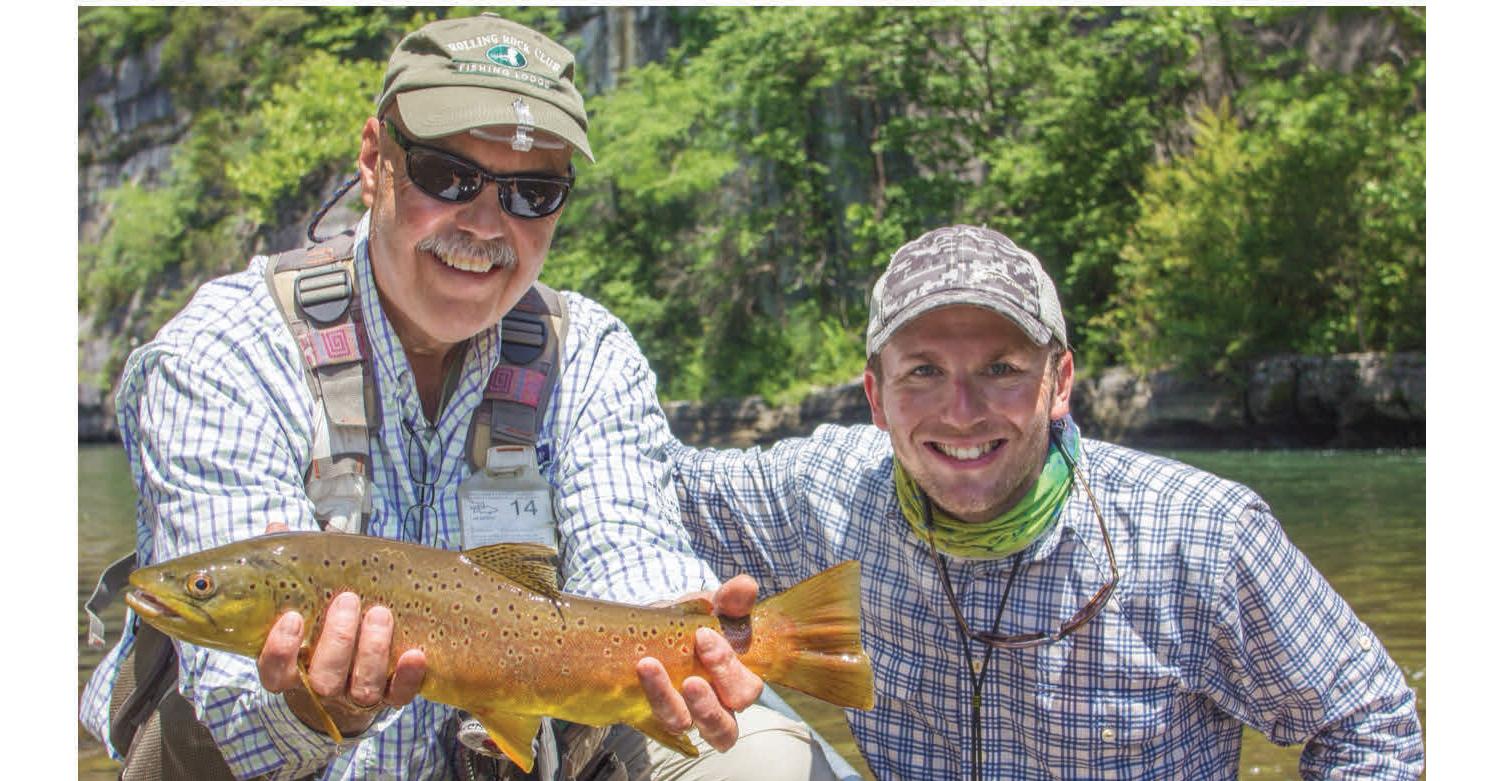




































































Dear Angler,

We’re looking to expand our franchise footprint and are seeking like-minded outdoor enthusiasts who share in our vision to bring our free publication to every town in America! is is a great opportunity to own your own business, control your time and, to a great extent, control your income.
Our Ideal Franchise Candidate Will:
• Be an avid angler and/or love the outdoors.
• Have either prior business experience or a minimum of three years sales experience.
• Good communication skills
PUBLISH YOUR OWN FISHING MAGAZINE!
If you love the outdoors and dream of being in business for yourself, now is the time to choose a Coastal Angler or e Angler Magazine Franchise.
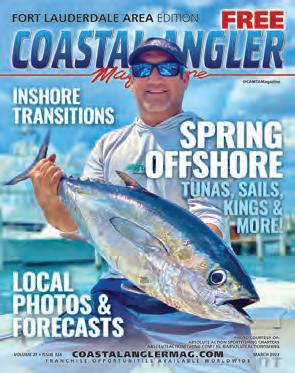
Established Brand • Proven Systems Training & Ongoing Support

Work From Home • Be Your Own Boss
• Alabama - SOLD
• Big Bend, FL
• Charlotte, NC
• Connecticut/Rhode Island
• Daytona Beach, FL - SOLD
• Destin/Pensacola, FL - SOLD
• Eastern Tennessee
• Georgia (Coastline, Savannah)
• Lake Erie, Ohio - SOLD
• Lake Michigan
• Long Island, NY
• Miami, FL - SOLD!
• New Hampshire
• New Jersey
• New Orleans, LA
• North Carolina (Raleigh, Wilmington)
• Okeechobee, FL - SOLD
• Outer Banks, VA
• Panama City, FL - SOLD!
• South Carolina (Hilton Head, Myrtle Beach)
• Tallahassee, FL/SW GA
• Texas (Coastal, Houston)
• ...YOUR HOMETOWN!
Don’t see your location? Ask one of our specialists about franchise availability in your area.
1-888-800-9794
info@coastalanglermagazine.com
franchise.coastalanglermag.com
• Good credit
If you or someone you know is looking for an opportunity to own their own home-based business and earn a living in the outdoor industry, please contact us toll-free at 1.888.800.9794 or email info@coastalanglermagazine.com.
Tight lines, Ben Martin Editor In Chief Coastal Angler Magazine e Angler Magazine
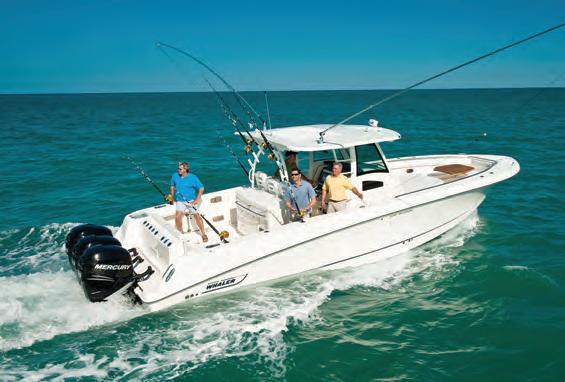

www.CoastalAnglerMag.com
FRANCHISOR-CORPORATE DIRECTORY
EDITOR IN CHIEF : Ben Martin • camads@coastalanglermagazine.com
COO : Tracy Patterson • tracy@coastalanglermagazine.com
ART DIRECTOR : Laura Kelly • graphics@coastalanglermagazine.com
EDITORIAL COORDINATOR : Nick Carter • editorial@coastalanglermagazine.com
WEBMASTER : Ryan Clapper • webmaster@coastalanglermagazine.com
ADVERTISING & FRANCHISE INQUIRIES: info@coastalanglermagazine.com • 888.800.9794
FRANCHISE DIRECTORY LINK
www.coastalanglermag.com/directory



Sfrequent, and the pelagics are plentiful. is time of year, you can usually point your boat o shore and eventually run into the mecca. However, these sought-a er pelagic species are moving around through their migrations and nding them isn’t always guaranteed. Sometimes you just get unlucky running and gunning all day, on the hunt for birds, debris and weed lines. Whether you are out there with no signs of life or just can’t seem to get away from schools of undersized sh, it’s a good idea to have a backup plan to save the day and make the fuel bill worth it.
Having a deep-drop rig ready to go can save a day of o shore shing. Sword shing can be an epic day saver, but it takes quite a bit of time, gear and involvement to have a good chance. ere are a lot of opportunities for shing the bottom between the reef and the sword grounds.
With a set-up that can handle shing between 500 and 1,000 feet, you will have what you need to quickly pepper in some drops during your day, without spending too much time setting it up and packing it away. ere are a variety of edible aliens that can be targeted, or even snagged as bycatch, when shing in the deep, but pretty much all
onboard, in case you get hung on the bottom, or adjustments need to be made due to the current. Having the right weight is important, and it is pretty easy to tell a er a drop if you have put on too much or too little. I would recommend having 6-, 8- and 10-pound weights to make your adjustments with. ese leads can be extremely pricey, so look into some DIY methods if this is something you plan to get into.
Depending on what you want to target, there are a few variations you will want for your rigs. Utilizing 300-pound mono and sleeve swivels, space out up to ve hooks along the leader, making the drop-down leaders short enough that they won’t tangle with each other. Play around with di erent size hooks and spacing between them. If you aren’t sure what might be living on a newfound bottom spot, drop a rig with varied hook sizes, having the biggest on the bottom. It is also a good idea to a x a 6-inch, 50-pound breakaway leader to the lead to save the rest of your gear when you inevitably get hung up.

Searching for new bottom spots can be one of the most exciting parts about this type of shing. You might see ledges full of life on your machine, or you might see nothing at all, and still nd sh.
You can even look for changes in the waves on the surface that indicate depth uctuations on the bottom. Mark your spots whenever you get a bite, and start your own collection of o shore honey holes.
Sweet E’nuf Charters’ two-boat eet specializes in deep-dropping out of Marathon, Florida Keys. Call them at (504) 920-6342 to book your trip this summer. Follow Capt. Quinlyn on social media @captainquinlyn.




Thevery best hunting knives possess a perfect balance of form and function. They’re carefully constructed from fine materials, but also have that little something extra to connect the owner with nature. If you’re on the hunt for a knife that combines impeccable craftsmanship with a sense of wonder, the $79 Huntsman Blade is the trophy you’re looking for.
The blade is full tang, meaning it doesn’t stop at the handle but extends to the length of the grip for the ultimate in strength. The blade is made from 420 surgical steel, famed for its sharpness and its resistance to corrosion.
The handle is made from genuine natural bone, and features decorative wood spacers and a hand-carved motif of two overlapping feathers— a reminder for you to respect and connect with the natural world.
This fusion of substance and style can garner a high price tag out in the marketplace. In fact, we found full tang, stainless steel blades with bone handles in excess of $2,000. Well, that won’t cut it around here. We have mastered the hunt for the best deal, and in turn pass the spoils on to our customers.
But we don’t stop there. While supplies last, we’ll include a pair of $99 8x21 power compact binoculars and a genuine leather sheath FREE when you purchase the Huntsman Blade
Your satisfaction is 100% guaranteed. Feel the knife in your hands, wear it on your hip, inspect the impeccable craftsmanship. If you don’t feel like we cut you a fair deal, send it back within 30 days for a complete refund of the item price.
Limited Reserves. A deal like this won’t last long. We have only 1120 Huntsman Blades for this ad only. Don’t let this beauty slip through your fingers. Call today!
Huntsman Blade $249*

Offer Code Price Only $79 + S&P Save $170
1-800-333-2045
Your Insider Offer Code: HBK186-01
You must use the insider offer code to get our special price.
Stauer ®
Stauer® 8x21 Compact Binoculars

-a $99 valuewith purchase of Huntsman Blade
What Stauer Clients Are Saying About Our Knives


“This knife is beautiful!”
— J., La Crescent, MN
“The feel of this knife is unbelievable...this is an incredibly fine instrument.”
— H., Arvada, CO
Rating of A+
14101 Southcross Drive W., Ste 155, Dept. HBK186-01 Burnsville, Minnesota 55337 www.stauer.com
*Discount is only for customers who use the offer code versus the listed original Stauer.com price.
California residents please call 1-800-333-2045 regarding Proposition 65 regulations before purchasing this product.
•12” overall length; 6 ¹⁄2” stainless steel full tang blade
• Genuine bone handle with brass hand guard & bolsters
• Includes genuine leather sheath

For many anglers, yellow n tuna settle right into the sweet-spot of the tuna shing world. ey’re bigger and stronger than black ns, while being far more approachable than giant blue ns. ey’re fast and strong, and they school up, sometimes crashing baits on the surface. ere’s so much to like about this tremendous game sh, and it doesn’t hurt that limits are relatively liberal in most places. Did we mention that yellow ns are made of the delicious meat known as ahi in sushi bars?

Here are three of the best destinations where you can test your strength against a few yellow ns. Win the battle, and you’ll eat like a king.
One of the most consistent places in the world for catching yellow ns is out of Venice, e “Yellow n Capital of the World.” Tuna are a year-round possibility here in the Northern Gulf, where the Mississippi River produces rich currents and rip lines that roll out to hundreds of oil rigs and undersea mounts known as lumps.
Summertime brings better weather and calmer seas, when getting o shore more quickly and comfortably can reward anglers with mixed bags of mahi, wahoo, snapper and tuna in the 40 to 80-pound range. However, peak season for giant yellow ns is in winter, and triple-digit sh become the norm when the bite is hot. Fish heavier than 200 pounds are a de nite possibility.


On Mexico’s Paci c Coast, where the landmass begins to curve east, Puerto Vallarta is positioned within range of some of the most proli c tuna grounds in the world. Outside of Banderas Bay, a series of islands and deep-sea banks draw in tuna like clockwork at certain times of year. ese are some of
By CAM Stayellow ns here, but shing is best from July through October, with a typical peak season of August and September. With runs of 36 to 125 miles to reach the shing grounds, anglers must commit to long days on the water or overnight trips. e rewards can be huge. A low-end average sh weighs 80 pounds out of Puerto Vallarta. Big ones weigh 350 pounds or more.
e Outer Banks get a lot of attention for giant blue n tuna that move through in the winter months, but yellow n tuna are around all year. With the Gulf Stream averaging 30 to 45 miles o shore and all the bottom structure on the Continental Shelf, large schools of yellow ns are frequently encountered along with many other pelagic favorites.
Unpredictable weather makes the deep winter months of January and February a crapshoot, which leaves October through December and March through June as prime time for catching yellow ns. ey run a little smaller here, with 25- to 65-pound sh being normal catches, but the action is usually fast once you nd them. Charters ll limits quickly, with doubles and triples coming tight when you troll through a school of them.
For more great destination shing, visit coastalanglermag.com.


Performance Bulletin Available
59 YEARS OF REPOWER EXPERIENCE!
Mastry Engine Center has received the Suzuki Marine Super Service Award and has been ranked #1 in Suzuki Marine US Sales!
Repower packages designed to best fit your needs and not stretch your budget. Financing available.





All Suzuki repowers come with the new Suzuki 5-year factory warranty.
Many of our Suzuki RePower Centers feature Water Accessible Drop Travel Lifts.

Suzuki RePower Centers are stationed around the southeast to help with your Suzuki service and repower needs.

There’s a wide variety of snapper species in the Florida Keys, including mangrove snappers, yellowtails and cuberas. However, the mutton snapper is a distinct and noteworthy member of this group. ey are a ton of fun to catch, delicious to eat, and they become easier to target in summer.



During the summer months, typically from May to September, mutton snappers spawn in large numbers, gathering in groups around reefs and wrecks to reproduce. Since these spawning aggregations are typically found in deeper waters, this makes conditions for ghting them more challenging and more fun. ese sh are renowned for their impressive power, strength and agility, so successfully reeling them up from deeper water requires good angling skills. Muttons make strong runs and sudden dives, so it’s important to have 20- to 30-pound test and a little heavier gear than you’d need for smaller mango or yellowtail snapper.
Landing a big deep-water mutton is a rewarding and exciting experience.
I caught my personal best mutton while shing with Capt. Brandon Storin, aka Capt. Bean. It was a 16.2-pounder on light tackle, and it was such a fun and challenging ght. Muttons will de nitely test your endurance. Even with heavier tackle, they will give you a ght to remember!
In fall and winter, muttons can also be caught in shallow waters, and this is also exceptionally fun. When conditions are right, a good inshore/backcountry guide can put you on a few of these skinny-water brawlers, along with the other species found in the backwaters of the Keys.
Mutton snapper make excellent table fare, but it’s important to remember that you should only keep what you plan to eat out of respect for the shery, especially when they aggregate to spawn. A fully grown mutton snapper could feed ve or six people, so keep that in mind when you’ve got a boat load of people throwing sh in the box.
If you want to experience and immerse yourself in the Mutton shery here in the Florida Keys, I recommend booking an o shore charter with Bud N’ Marys Marina.
Check out Capt. Bean’s inshore charters, visit

































Trade-in your dirty, uncivilized, oil-burner for an environmentally responsible, clean, quiet, efficient Suzuki 4-stroke!


For a limited time, when you purchase a new Suzuki outboard from an authorized Mastry RePower Center you will receive a Special Trade Allowance for your dirty and outdated 2-stroke outboard. This is Mastry’ s commitment to help keep our waterways clean as well as making it easier for you to improve your boating experience with an up-to-date quiet, efficient 4-stroke outboard. Contact your closest Mastry RePower Center for the details of this Exclusive Mastry RePower Center Offer.



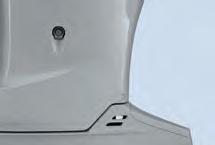
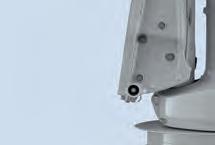







ICAST 2023, the planet’s largest sport shing trade show, will invade Orlando July 11-14, lling the giant exhibit halls of the Orange County Convention Center with more than 600 companies showcasing all the latest and greatest in shing from all over the world.

Produced by the American Sport shing Association (ASA), the 66th annual ICAST promises to be bigger and better than ever. It is the epicenter of the sport shing world, where each year the trends in shing tackle, apparel and accessories are launched and countless valuable business connections are made.
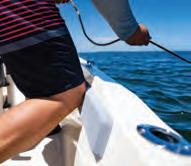
“ICAST is the cornerstone of the global sport shing industry,” said ASA President Glenn Hughes. “ICAST is where connections are made that create business opportunities for our industry. It’s also where most new products make their debut into the shing marketplace.”

Each year, this is the one can’t-miss event of the season for everyone in the outdoors industry. From shing guides to retailers, media and exhibitors of shing-related products and services, it’s a one stop shop, where your business might nd its next big money-maker.
Coastal Angler and e Angler will be at ICAST in force. Look for our logo-emblazoned team members perusing the aisles in search of

the next big thing. Stop and ask us about special ICAST free giveaways and deals on advertising.

If you’ve got a message to share, we’ve got the vehicles to spread your story to hundreds of thousands of shing enthusiasts.
At its heart, ICAST is about the New Product Showcase, where the coming year’s hottest new


gear is debuted for the industry. From a eld of hundreds of new tools, tackle, lures, electronics, apparel and more, the following pages contain some of our favorite industry innovators right now.
For more information, go to www.icast shing.org.
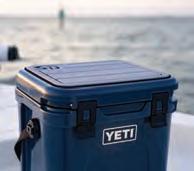
Okuma Sarasota Rods are the epitome of strength and versatility. Built with a 24-ton or E-glass blank, they feature Okuma’s UFR-II: Ultimate Flex Reinforcement rod tip technology for the ultimate in lifting power and durability. Elevate your experience with eight spinning, casting, and trolling models designed to exceed your expectations on the water.


| okumafshingusa.com







































































































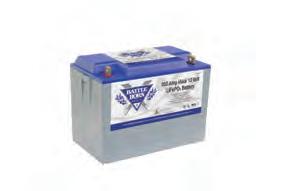
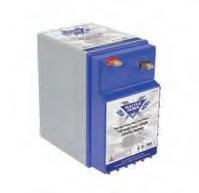









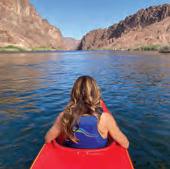

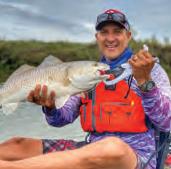




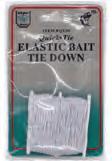



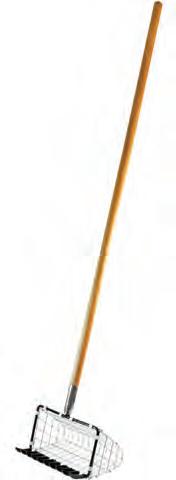

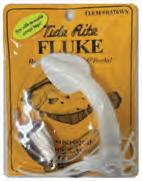
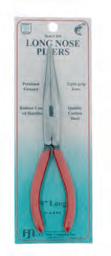

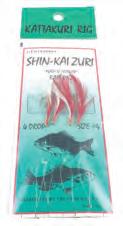



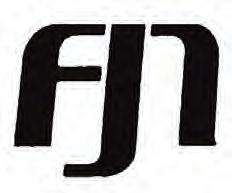
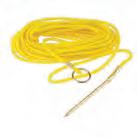


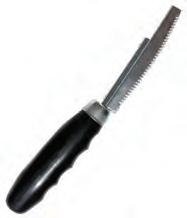



ICAST SPECIAL DISCOUNT

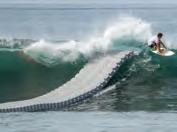

Lasting 2-3 times longer than wooden, concrete, and aluminum docks, our modular foating system is the preferred dock choice for residential, commercial, marina, liesure, and other applications. Customizable and confgurable for boat docks, liesure and recreation docks, and drive-on jet ski and personal watercraft!
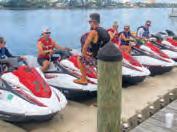

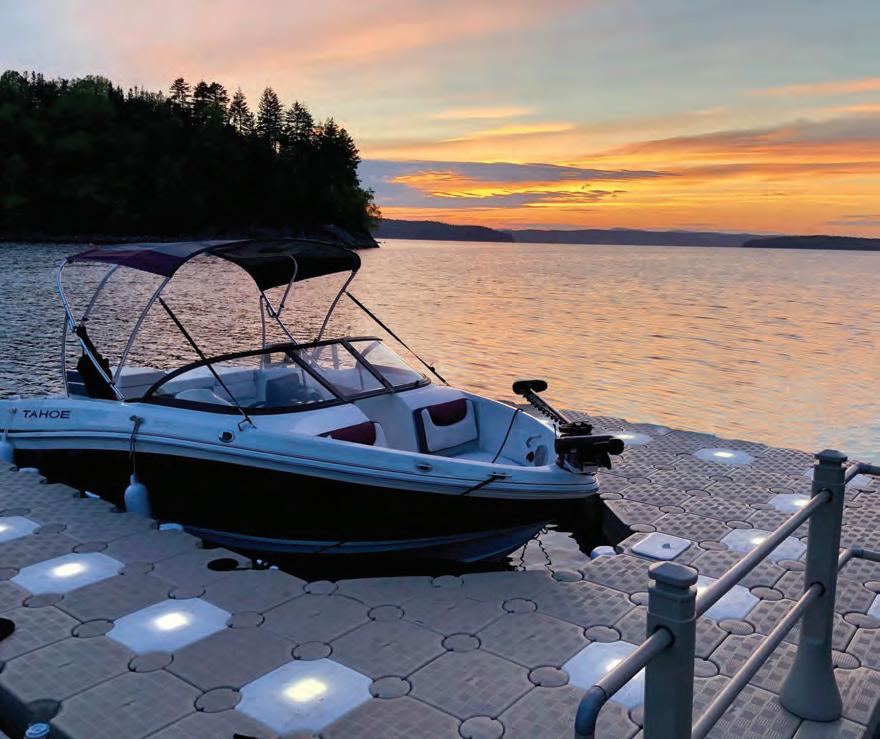
•High-quality plastic
•Environmentally-friendly
•Guaranteed for 20 years
•Near-zero maintenance
•Completely customizable
•UV and pollution resistant
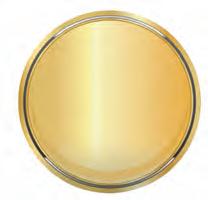
www.candockcf.com


It appears our rainy season has made it to Southwest Florida, so get used to the normal afternoon thunderstorms. Normally this changes our harbor in a major way. Our clear water that we got used to fishing during the spring months begins to darken. However, this is not pollution and is simply rain runoff that contains tannic acids. These acids are like tea leaves that stain the water brown. Mangrove snapper have great eyesight and can be hard to catch
at times, but with the daily rains it can make it a little easier. Also, you might want to drop down your tackle size. Try using a 20lb fluorocarbon leader and a small #1 circle hook. Most small baits will get the job done, shrimp, small pilchards and even cut baits. Most of our snook population has spawned and the beaches will still be holding large numbers of fish for the next couple months. The flats and mangroves are also still holding good numbers of fish. Tarpon should start pushing into the harbor after leaving the pass. When the water is calm rolling tarpon can be spotted from a great distance. Remember to keep an eye in the sky. This time of year thunderstorms form very quickly and can create dangerous conditions.
If you would like to experience some Charlotte Harbors finest fishing give us a call or send an email. All our charters are private and customized to fit you and your party’s needs.



Hello fellow anglers, I have been contributing to this magazine for over ten years. I started with the founder of Coastal Angler Magazine. Rodney Smith started it on the East Coast of Florida. Then it grew to S.W. Florida and beyond. I have worked with several editors over the years. At one point I was even distributing them in our local area. I have to thank Robert Lugiewicz for introducing me to Rodney. And that is the short version how I got this opportunity to share my fishing knowledge. I also taught a local fishing class to seventh graders for ten years. It was named after a local man Don Ball, it was called the Don Ball School of Fishing. It was great for me to share my local knowledge. My family brought me here from Iowa in 1959, I was 9mos. old at the time. I grew up in Punta Gorda where I went to school al within 3 blocks of each other. We lived in Charlotte Harbor and my mom worked in Punta Gorda and that's how I spent time on both sides of the bridge. My Grandparents lived in Port Charlotte where all the grand kids took turns spending the weekends with Grandma and Pop's. Pop's was the one that taught me to fish for shiners with a cane pole and dough balls. As I got older, he taught me to drive the boat. Back in those days there were big islands of freshwater Hiaasen's in the harbor. They came from the Shell Creek when it would rain and send them over the dam. The only time I did not live in Charlotte County I went to St. Croix to work after Hugo in 1989. I have seen lots of changes on the harbor over the years. but I do not remember sharing this information in the past. July in S.W. Florida inshore look for the snook on the move looking for a place to spawn. Tarpon from the beach to the bridge on the Peace River and Myakka River. Sharks are in the feeding mode always looking for a chunk of meat to chow down on and snook, reds, and trout scattered around the harbor. Offshore, red grouper and snapper from 65 feet out to 100 feet. In the 100-foot range some of the wrecks should be holding some nice yellowtail snapper, and barracudas. If you spend a good amount of time, you could find some black fin tuna and amber jacks too. If you would like to come along with Capt. Bart Marx to learn some of these tactics give me a call at 941-979-6517 or e-mail me at captbart@alphaomegacharters.com or if you would like me to come on your boat for a training session, please contact me and we can set a date to go. So always remember singing drags and tight lines make me smile!







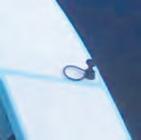

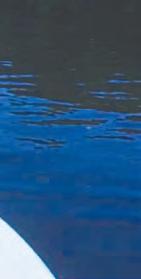

 By: Caitlyn Gatrell
By: Caitlyn Gatrell


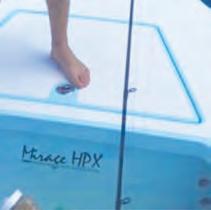
During the summer months, fishing in Southwest Florida really fires up. A variety of species are on the prowl looking for their next tasty meal, and one of those being snook. Snook are feisty fishes putting up intense and strong fights, landing them towards the top of the list on best gamefish. Many anglers search year-round for that thump and drag screaming fun, reeling them in with big smiles, posing for photos, and then either releasing or taking them home, depending on the season. For most anglers, snook are the type of fish that provide many memories and fishing stories.

I c an recall catching snook for many years, even the early years when I didn’t even know what a snook was, ha-ha! But something about now, knowing the species and knowing the strength and power they hold, allows me to look at them in a different way, with more respect. As mentioned before, I am not the best at bringing in snook, so whenever I hook into one, it always is a heart racing event. The first snook that got me into fishing was an odd one. Caught in a small weir like area, a 32-inch snook with a large head but skinny body, slammed onto my live cichlid. Ripping the fish up while fighting the overflow from the current was a tough one, but with nowhere really for the fish to hide, I was able to pull her up. That snook definitely got me interested in catching them more often, and so now every time on the water, I look to find another big one.
Summertime really brings out the snook in our area, and we look to find success at hooking into the bigger ones. We use whatever bait seems to bring us luck, pilchards, mullet, artificial lures, whatever they are biting. As we spend most of our times fishing in the backwater mangroves, it can get tricky trying to pull them out at times. I have recalled a couple times hooking into a big one but unfortunately losing it to the underwater maze of the mangroves. Every loss however is another opportunity for me to learn a better strategy, and therefore I put that to work each time I hook into another one. While we haven’t had success yet at landing any monsters this year, we still have been able to hook into some nice ones. I recently have become a volunteer for GrayFishTag and have also made some efforts to tag some snook. By doing this, I am able to contribute to research and conservation purposes, and not just for snook, but the fisheries industry as a whole. As we are enjoying the summertime snook bite, I am keeping my fingers crossed for a big one soon!

Firstly, thanks to all of my Marine Corps Bothers and Sisters as well as everyone else that served and are serving in our armed forces - Semper Fi!
It is that time of year, or the beginning, when good numbers of snook, and big redfish move into the back waters of Pine Island Sound and other secluded estuaries in Matlacha Pass (Oyster Creek, St. James Creek and Smoke House Bay), just to mention Turtle and Bull Bays on the northern end of Charlotte Harbor. In other words, with the higher summer tides, the redfish, snook, seatrouts and other species will be in most any area. They will be very aggressive eating shrimps, crabs and other baitfish which includes pilchards, threadfins and pinfish. Big snook will begin cruising the beaches as they spend the summer months spawning and enjoying the numerous baitfish that are available for feeding. They will be found on all of the beaches of Sanibel, Captiva, Cayo Costa and Boca Grande in good numbers. Every day in July (weather permitting) should offer plenty of opportunity for an inshore ‘Fish of a Lifetime’, be it a snook, redfish, seatrout or tarpon. One of my most effective strategies for targeting and catching these wonderful ‘gamers’ is to;
1) Work the top half of the incoming or outgoing tides. I prefer to fish for snook or tarpon on and outgoing tide as opposed to the incoming. On the incoming tide, the fish will be closer to the beach, swimming parallel to the trench. However, on an outgoing tide, they will tend to move to the secondary ‘trench’ (further from the beach). Regardless, while fishing from shore, stay on the beach and out of the water when making a presentation. Big snook and tarpon spook easily!
2) In regard to redfish and big seatrout; I prefer to target them on an incoming tide in the back country areas around spoil islands. Where possible, fish the higher tides of the month during both the new and full moons. The tides in SW Florida move up and down every six hours, with few exceptions. Check out the tide movements for any particular day, month or location online at Saltwatertides.com. Super moons will normally reduce the fish bite.
3) Regardless of where one is fishing, do not stay in one spot too long. Move around to different locations to find the fish (they are not looking for you; you are looking for them). Work the points of islands with good current. Fish in and around the ‘dead’ wood structures
in the back country areas. Fish your presentation very close to or actually under the mangroves, especially when the tides have ‘topped’ out as the fish are most likely to be taking refuge and protection deep into the ‘woods’. If pinfish and mangrove snappers are biting, move on to a different spot, as it is unlikely that the snook, redfish or seatrout are active at that location, at that time. Your job is to find them. Tenacity is the ‘key’ to finding and catching fish! Nothing good comes easy, so get to work and make it happen.
4) Fish the windward side of the islands (keys) and structure with threadfins, pilchards and large shrimps for best results. I use circle hooks in sizes from 1/0 to 3/0 depending on the size of the bait, not for the size of the fish I am hoping to catch. A 1/0 hook will catch and 40 plus inch fish, just as a 3/0 hook will. Match the hook to the size of the bait fish so the hook is not too big preventing the bait from a natural or slightly injured swim motion!

5) A nother effective method for fishing the back country areas (around spoil islands with oyster bar clusters and lots of mangroves) is to fish shrimp, crabs on the seabed with a weighted jig head along those spots to hold the baits in place, or under a cork suspending the bait of choice just above the seabed. ‘Still’ fishing these baits are not a ‘sexy’ way to fish but can be the most effective.
6) A rtificial baits presentations work as well, but not as effective as live baits. Go figure!
7) Do not hesitate to ‘re-visit’ previous spots at different times of the day during the incoming or outgoing tide cycles, as the fish may not have been there when you first made your presentations. If the area looks ‘fishy’, give it a couple of attempts before writing the location off. In this regard, over periods of time, fish will relocate given a number of factors including changes in water temperature, food supply, structures and fishing pressure. Other factors will include wind speed, wind direction and water clarity.
Finally, I am continually on the prowl to for new areas that hold fish. I always try at least one new spot each time I go out in an effort to locate fish. This is Captain Terry Fisher of Fish Face Charters LLC wishing everyone a happy and safe INDEPENDENCE DAY, JULY 4TH.



As anglers, we have a tendency to repeat what we know. We go to the same bodies of water, fish for the same species and continue to do the same things over and over. I had the chance to join the new FKBT (Florida Kayak Bass Trail) this past winter and it was a real change for me. I have been intensively fishing salt water here in S.W. Florida for about fifteen years. Eventually guiding and perfecting my saltwater game as a guide and instructor for Gulf Coast Kayak. Mind you that I have freshwater fishing running through my veins but during my time in the Matlacha area it was all salt, all the time.

I have fished in many individual, day long tournaments but have never fished in a trial series. When my primary sponsor, Vanhunks Boarding, told me that they were going to be one of the main sponsors for a new freshwater tournament series I jumped at the chance to join them. This new club is the result of a huge effort by Christopher Bailey, Shawn Spears and ultimately Todd Quillan to hold professional tournaments in Florida. This tournament takes place across the State and covers about eight months out of the year. The entry fee is super cheap compared to other national trials and is also affiliated with the KBF Series. Another great attraction for fishing this series is the larger than usual individual payout after each event. You are not required to fish in every event but the more you score from the CPR (catch, photo, release) scoring system the better your chances to become Angler of the Year, receive a Vanhunks Elite Pro Angler Fishing kayak plus bragging rights!

I have to admit that I was unprepared for some of the fish I tangled with in the first two lakes. I have been fishing for freshwater Bass most of my life, first in Georgia and Alabama as a child and then northern New England as an adult and only recreationally so my gear was light weight with small diameter line and leaders. After I joined the club a bunch of the members offered me some start up advise that I apparently didn’t heed. I hooked into five of the biggest Largemouth Bass of my lifelong career and lost them all due to “light weight” gear. I left my typical freshwater gear home and used my saltwater setup for the next event with a much better result. The following events were an absolute blast featuring big fish and new waters for me.
All the guys I spoke to were super generous with advice regarding lures, setups and general help as they knew I was unfamiliar with the freshwater scene here. Consider stepping out of your comfort zone and join this awesome group of kayak anglers. You can find them on Facebook @ Florida Kayak Bass Trail.









very different from the ocean / Gulf swell. They happen in rapid succession and are punchy. I do not recommend paddling on the Caloosahatchee, especially under the bridges, in these conditions.
 By: Mike Hammond
By: Mike Hammond
Ihad to decide between paddling in 11 mph wind on the Caloosahatchee River or my third consecutive day in the office. Pretty easy decision!
The paddle was on one of our lesser-known creeks. Most local paddlers are familiar with both Telegraph Creek and Hickey Creek. Powell Creek, however, may not be as well known.
I opted to launch from North Shore Park in North Fort Myers and paddle under the Caloosahatchee and Edison bridges. North Shore Park has free parking close to the water, a shell beach, port-o-lets, and is an easy spot for launching. After paddling past the protection of the park’s seawall, an office day didn’t seem so bad. The wind funneled under the Caloosahatchee Bridge and waves bounced off the wall and bridge pilings. It was challenging to remain standing on my SUP. I knelt on my board to avoid an unwanted swim. The waves seemed even worse under the Edison Bridge. I could not stand again until reaching the creek. The wind and waves on the Caloosahatchee are
It was a 1.5-mile paddle from North Shore Park to the creek’s mouth. While there are homes on one side of the creek, the other side is natural and lined with overhanging mangroves. I heard a couple of big “swooshes” I believe were large snook. I paddled about a mile before deciding to turn around. The creek becomes shallow and narrow at this point. Mike Westra from Lehr’s Economy Tackle knows the creek well and said you can sometimes paddle to Bayshore Road. Mike also shared great information on fishing this and other creeks in the area. Because conditions are always changing and there was too much information to share in this short article, I suggest going into Lehr’s and talking to Dave or Mike yourself. They can give you great tips on fishing anywhere in Lee County. Powell Creek is so close, it’s only one good cast away from their shop. While paddling in the creek I saw a barred owl and several species of herons. It was a relaxing paddle and I almost forgot what was waiting in the Caloosahatchee for the return trip. Lots of wind and waves. At least they would be generally pushing me back to the launch.
If I had out-of-town guests visiting who were more interested in paddling than fishing, I’d go to either Telegraph or Hickey Creeks first. But I did enjoy paddling Powell Creek and according to Mike, the fishing can be very productive under the right conditions. It is worth adding to your list of potential paddles when the wind is low.

community of creatures that gamefish need. They are also important habitats for some of Florida’s most iconic bird species.
Along the mangrove shoreline is a great place to forage at low tide if you’re a Roseate Spoonbill. These bright pink birds sweep their slightly open, flattened bills through shallow muddy water looking for aquatic insects, shrimp, and small fish like killifish and sheepshead minnows.
At high tide, an oyster reef is a busy place. Oysters open to filter feed on nutrients while the nooks and crannies between the shells come alive with crabs, worms, and other invertebrate animals that form a buffet for redfish and other aquatic predators. When the tide begins dropping, before the oysters close, another predator arrives by air: American Oystercatchers. These birds use their blade-shaped bills to pry open oysters and other critters.
On a sunny, summer morning, a light breeze adds ripples to the water’s surface while gentle waves lap the shoreline. It’s low tide: the water is dark and shallow. A flats boat glides slowly across the bay, heading out toward the Gulf of Mexico. Suddenly, a flurry of action: the line gets tight, and reel sings out. Fish on!
Florida’s Southwest Gulf coast offers an amazing variety of aquatic environments, including mangrove shorelines, oyster reefs, and seagrass beds. Each of these habitats provides food and shelter for a


Seagrass beds are perhaps the most important habitat for both fish and birds. These forested meadows are the best place to live if you’re a tiny baitfish because there is plenty to eat and lots of places to hide. Where trout and snook find their meals, wading birds like Great Egrets and Little Blue Heron also like to hunt for many of the same species of bait.
It’s all about the habitat! Wading birds depend on the same habitat that gamefish use to survive and thrive. As anglers and birders, we must protect these special places and keep them free of fishing line, litter, and other debris.






Many anglers love to spend the day fishing along our Florida beaches. With the warmer conditions of summer, the beach can be a great place to fish and keep fairly comfortable in the heat. There are many ways to fish along the surf and most of these can be productive. Many different presentations also have their place when it comes to beach fishing. I would encourage anglers to take advantage of the many opportunities that are available along the Florida coastline. Enjoying the incredible fishery that we are so blessed with. My favorite way to fish along the surf is to walk and sight fish. For me sight fishing doesn’t mean that I’m just looking for visible fish. I’m looking for bait, birds, structure, and unusual features that may hold fish. I look for deeper sections along the sandbars, or a blowout where the water escapes through a sandbar. I look for noticeable points that stick out along the shore. Rocks or man-made structures that find their way along the beach from storms or heavy surf. All these and other features can and will hold fish. The more distance I cover, the more time I spend walking the more of the features I notice. Fish are very opportunistic, and they are going to hold or be around areas that cause breaks or changes in the current flow. These areas usually will attract smaller fish or bait and they are going to take advantage of that. Identifying these areas will definitely allow anglers to be more successful? The negative for many people is distance and time. How far do you need to go to find that area that will be most productive? Many features we can find on a satellite map, unfortunately the beaches and these features change quite often, here today gone tomorrow. Some days It doesn’t take me long to find or figure out and area, I might walk a few hundred yards but there are days I am willing to walk a couple of miles. For me I need all the exercise I can get but it can be a chore walking that far in the sand. The positive, many times your efforts will be rewarded when you find an awesome area that has a large concentration of fish, and you have them all to yourself. Enjoy our beaches, good luck and keep casting.
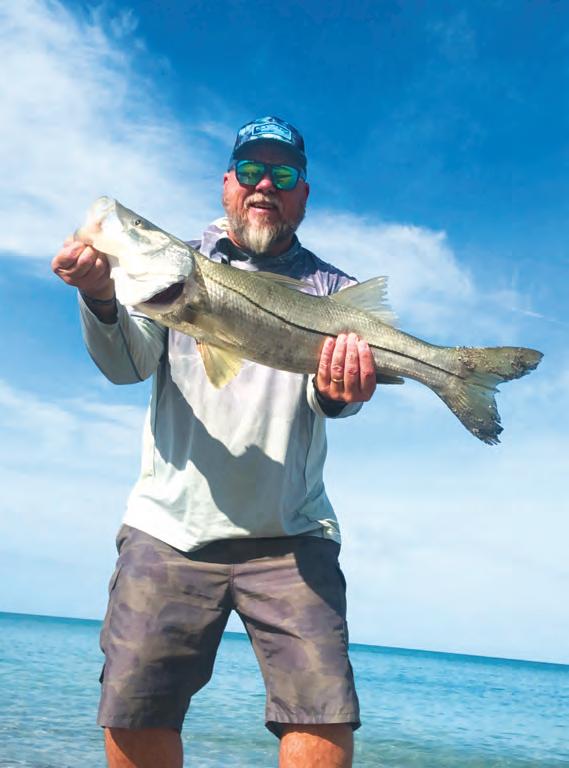















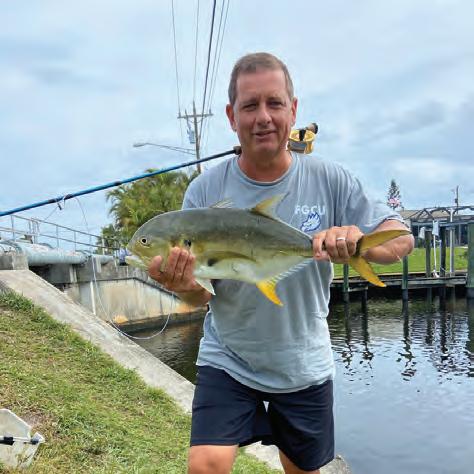
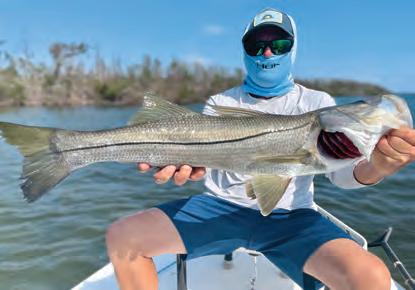
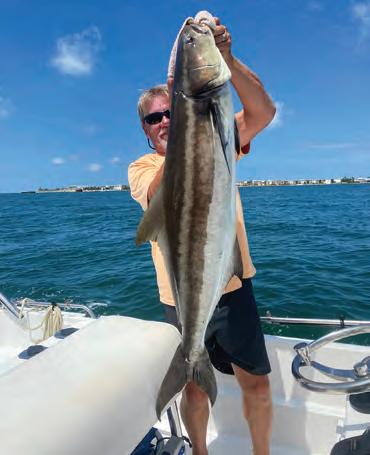
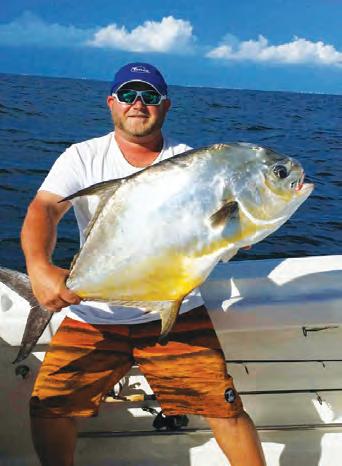
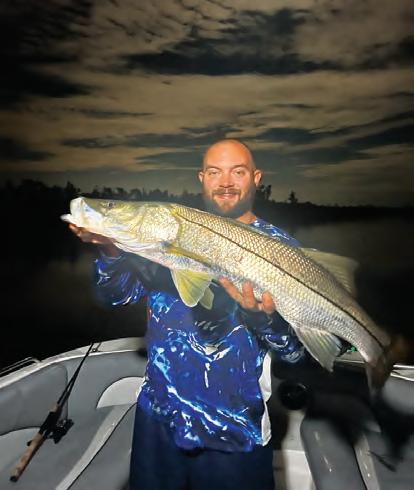

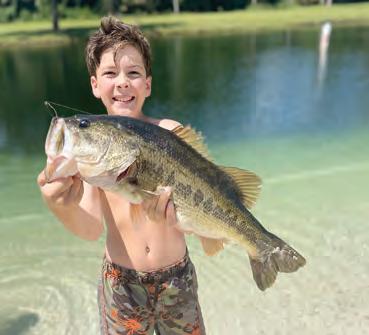
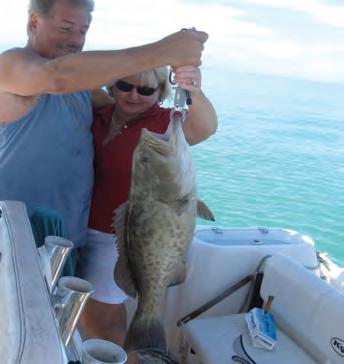
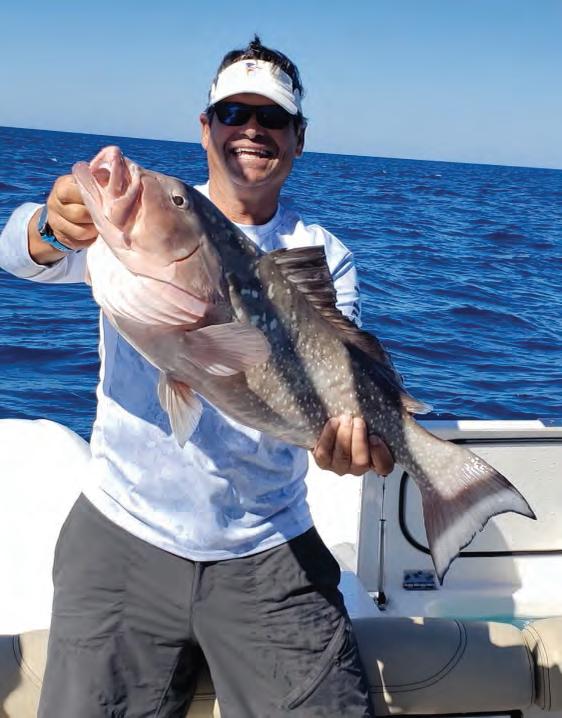
 Tim Barefoot
Tim Barefoot
We are seeing a heavy line of sargassum right now. Here’s how to make the best of it.
Along with grass comes sh. We’re having a great dolphin year, with some nice yellow ns and wahoo in the mix. e grass is a wonderful thing if you know how to take advantage of it.
It’s a well-known fact that the surface trolling bite slows as the sun rises to the 10 to 11 a.m. position. is is the reason to get baits down where the sh are, rather than continuing to troll surface baits while the one “meat stick”—the deep planer rod—gets all the bites. Tuna and wahoo don’t wear Maui Jims. When the sun penetrates deeper into the water, they simply go lower in the water column.
And… who says you have to be moving at 6-8 knots to get bites? Why not slow down and put several lines down where the sh are? It can result in steady, sometimes multiple hook ups. ere are several ways to accomplish this. You can use downriggers with release clips, use heavier trolling lures that fall when you occasionally take the boat out of gear, or use planer lures coupled with a slower speed to get baits down.
For example, a beautiful swimming (frozen) squid or ballyhoo on the downrigger is a ringer for the wahoo and tuna bite. An arti cial squid with an attached natural bait on a planer jig head or a deepdiving plug will also get bites. In addition these choices, a spread of slow-trolled live baits down deep is the ultimate o ering. We have several videos detailing the options listed above on our website.

With all the sargassum grass this year, this may be an especially attractive alternative to the standard 7 knots. When you’re constantly “shaggin’ grass,” you’re not as e ective, and it’s not good for moral when


deck hands ght more grass than sh. If you slow troll down a nice weed line with beautiful baits down deep in the strike zone, chances of getting bites are much better than shaggin’ grass at normal speed. Find structure and bait near a weed line and you’ll have the scenario for success. With or without structure or marking bait, the weed line is home to all types of life. We’ve cleaned yellow n tuna with a double handful of le sh in their stomachs the size of a quarter and smaller, along with small bit of grass.
If the weeds are not too scattered, troll as normal to nd the sh. When the sun gets up, slow down and concentrate on the areas you had bites earlier. Remember that the weeds are moving, along with everything that lives and feeds around the mats. Keep an eye out for other items oating in the grass mats to help keep up with your relative location.
For more from Tim Barefoot, go to barefootcatsandtackle.com.
As I write this, the largest mass of sargassum ever recorded is making its way to the Florida coast. For months, forecasters have been bemoaning the mess this 5,000-mile-long weed patch will make on our beaches, but I’m looking forward to what it brings.
Prey species live in the seaweed, and predators congregate around these weed lines. ere are going to be many di erent species of sh moving in closer than we usually get. Many anglers will enjoy chasing the larger predators; however, it’s fun to catch what we call peanuts, which are the small er dolphin sh that school up around the weeds.
e most distinguishing feature of dolphin sh is the bright neon green, yellow and blue coloration throughout their entire body. Dolphin have a long slender body, and the peanuts are typically 2 to 3 feet, with weights from 5 to 15 pounds. Dolphin get much larger than this, but the big ones don’t exhibit the same schooling behavior.
An amazing feature about dolphin sh is their dorsal n, which starts at the skull and continues all the way to the tail. To determine gender, male dolphin will have a more pronounced forehead, which almost becomes vertical with a 90-degree angle. Unlike most species of sh, the males tend to be larger than the females and are known as “bulls.”
Dolphin inhabit subtropical and tropical waters throughout the entire world. ey live o shore in the 70- to 300-foot depths. eir spawning season runs from April until August, as long as the water is warm enough. Dolphin broadcast spawn in current to ensure a higher rate of fertilization. Once the young hatch, they take shelter in sargassum patches or oating debris, which also provides a source of food since other juvenile sh will be hiding there also.
Fish in the big schools hanging around sargassum patches will usually be on the smaller side. So, you’ll want to use smaller baits like pilchards or thread ns and free swim them around the weeds. You might see a school of dolphin swarming your bait and ghting over it. eir bright colors and darting movements make them easy to spot.
Another option is to use small bucktail jigs or even 3-inch swimbaits. You can grab their attention by working lures like injured bait sh, and this is a great way to lure them out from under the debris.


While shing these patches, a great way to target larger sh is to sink a larger bait below the school. Larger dolphin and wahoo o en feed on peanut dolphin. It is illegal to use peanut dolphin as bait, but you could use ballyhoo, blue runner or even large thread ns.

e IGFA all-tackle world record dolphin weighed 87 pounds. It was caught by Manuel Salazar in the Papagayo Gulf in 1976.
Emily Rose Hanzlik holds 62 IGFA world records in various categories. She hails from West Palm Beach, where she has a part time Bow n Guide Service as well as shing classes for Jr. Anglers. Find her on social media @emilyhanzlikoutdoors.



NOAA Fisheries has announced that a closure to recreational harvest of red grouper in federal waters of the Gulf of Mexico will begin on July 21 and continue through the rest of 2023.

Perfect Vacation Getaway for Fishing, Boating & Outdoor Enthusiasts






e closure was spurred by landings information, which indicates the 2023 recreational annual catch target of 1,840,000 pounds gutted weight is projected to be met on July 20.
During the recreational closure, the bag and possession limit are zero for red grouper in or from federal waters of the Gulf. e prohibition on possession of Gulf red grouper also applies in Gulf state waters for a vessel issued a valid federal charter vessel/ headboat permit for Gulf reef sh.

If red grouper recreational landings exceed the annual catch limit (ACL) in a given year, the length of that following year’s recreational shing season will be reduced to ensure the recreational ACT is not exceeded in that following year.
For more information, visit www. sheries.noaa.gov.
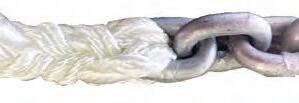
Nestled on six lush tropical acres of pristine waterfront directly on the Indian River Lagoon, take a step back in time to experience the very best of Old Florida charm with modern conveniences and services to make your stay truly memorable and unforgettable.
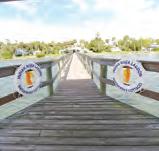


• FULLY FURNISHED 3 ROOM COTTAGES WITH FULLY EQUIPPED KITCHENS


Kingfsh Lodge includes a wide screenTV and bar for small gatherings

Sailfsh House features a wide covered wrap-around porch for larger groups
• Boat Trailer Parking on site w/ Water and Power
• 250 Foot Dock w/ Covered Area
• FREE Ice / FREE Guest Dockage
• Cable TV, Hi-Speed Internet

• 2 miles to the Ft. Pierce Inlet
• 12 miles to the Gulf Stream
• Laundry, BBQ Grilles and FREE use of our Kayaks




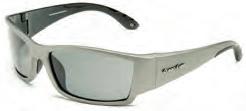
3011 N. Indian River Dr., Ft. Pierce, FL 34946 www.indianriverlagoonwaterfrontcottages.com Reservations and Information: (772) 349-2206

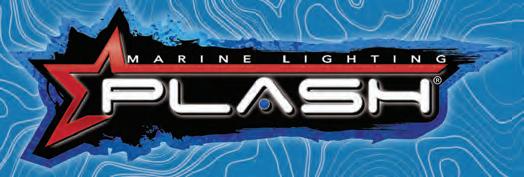
In 2018, when Hurricane Michael bowled over the Florida Panhandle, it decimated the shoal bass population in the Chipola River. e Florida Fish and Wildlife Conservation Commission estimates the population was depleted by 90 percent.


FWC is raising and stocking shoal bass to replenish stocks of this rare and native black bass. In May, 7,800 hatchery-raised shoal bass ngerlings were released into the river. is is the second consecutive year shoal bass were raised at the Blackwater Fisheries Research and Development Center near Holt, Fla. and then released into the Chipola River to enhance the wild population.
Shoal bass are one of four of Florida’s native black bass species, and this e ort marks the second time genetically pure shoal bass have been successfully raised at an FWC sh hatchery. Shoal bass are also a Florida Species of Greatest Conservation Need, which refers to native animals whose populations are of concern and are at risk or declining. e goal of raising and releasing these sh is to enhance the wild population to help maintain genetic purity and aid in the long-term conservation of this unique species of Florida black bass.
e Chipola River originates just north of Marianna, owing south for 95 miles through Jackson, Calhoun and Gulf counties where it joins the Apalachicola River. Currently, a catch-and-release-only regulation is in e ect for shoal bass on the Chipola River and its tributaries. Any shoal bass that are caught must be released alive immediately and possession is prohibited.
For more information, visit MyFWC/Freshwater.




During the 2023 Emerald Coast Open, 144 competing divers removed 24,699 invasive lion sh from the Gulf of Mexico. With support from Yamaha Rightwaters as well as many local, national and international conservation-minded organizations, the annual event set records for largest lion sh ( ve times) as well as the number of lion sh caught in both the pre-tournament and main tournament.

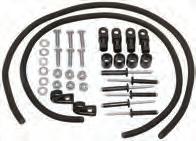

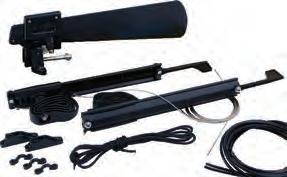

e mitigation of aquatic invasive species is one of the four pillars of the Yamaha Rightwaters mission,” said Martin Peters, Director, External A airs, Yamaha U.S. Marine Business Unit. “ e Emerald Coast Open helps foster healthy marine environments in the Gulf while educating the public about the damage a large lion sh population can cause. Yamaha Rightwaters will continue to support this tournament and applauds the e ort to help the Gulf of Mexico thrive as a strong shery.” sh prey on more than 167 di erent native sh species and can reduce some reef sh populations by up to 90 percent. ey are capable of eating sh two-thirds their size, and one lion sh can consume roughly 20 sh in a half hour.
“Since its inception in 2019, the Emerald Coast Open helped remove more than 72,000 total lion sh from Gulf waters,” said Alex Fogg, Coastal Resource Manager, Destin – Fort Walton Beach and Emerald Coast Open Organizer. “ e tournament not only yields immediate results and improvement within our sheries, it also demonstrates that catching lion sh is fun – and they are tasty! We’re glad to have the support of Yamaha Rightwaters and look forward to developing our relationship as we begin to plan for the 2024 tournament.”
To learn more about the Emerald Coast Open, visit emeraldcoastopen.com.

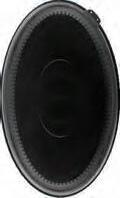

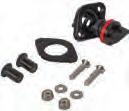









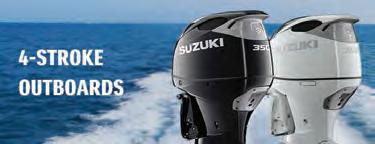
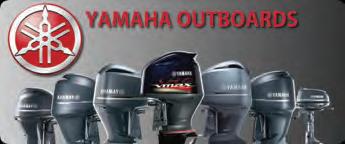










On the Gulf side, Florida anglers are looking at a pretty solid red snapper season this year, with summer dates from June 16 through July 31 and additional fall dates to pursue one of the South’s favorite game sh.

It’s a di erent story over on the East Coast. With the way the federal government has regulated snapper shing in the Atlantic over the years, anglers have come to count themselves lucky if there’s any Atlantic snapper season at all. is year’s allowance of two days—July 14-15— for recreational snapper harvest in the South Atlantic has anglers looking for ways to make the most of it.
From all reports, there are scads of red snapper out there. Catching the per-person limit of one sh should not be a problem. e key to a productive day that’s worth the gas is planning. Here are a few tips to help you make the most of the red snapper rally.

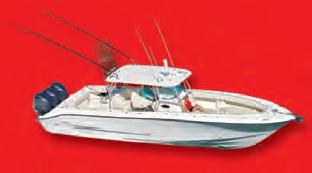
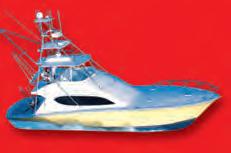

Load the Boat: With a limit of one sh per person, it’s time to load the boat with as many people as it will comfortably and safely hold so that you can ll the sh box with as many snapper as you are allowed. is is your two-day opportunity to ll the freezer with delicious sh. So, the more people you bring, the more sh you get to bring home. is is a great time to take kids. Kids love to sh, and they also take up less room in the boat.
Go With a Plan and a Backup Plan: For two days, it’ll seem like everyone with a boat is parked over every wreck and reef in the Atlantic. Get to the ramp early, and plan to be patient, because there will be a bunch of anglers with the same idea. Know where you hope to start the morning, but have several back-ups in case your honey hole doesn’t pan out. When you get there, if your graph doesn’t light up with life, don’t waste your time. Keep moving until you nd bait and sh.
Fish Big: With a one- sh limit, and no size limit, it pays to target the biggest sh down there. Fish live baits that are big enough to get past the smaller snapper down to 20-pounders. It wouldn’t hurt anyone’s feelings if a big grouper took the bait, either. is also limits the number of small sh you’ll give a case of barotrauma, which is a good thing.

Remember, use of a dehooking tool is required. ere is also a requirement for the use of non-stainless steel hooks. In waters North of 28-degrees N. latitude, the use of non-o set, non-stainless steel circle hooks is required when shing for snapper grouper species. A descending device is also required on board all vessels and must be readily available for use (attached to at least 16 ounces of weight and at least 60 feet of line).
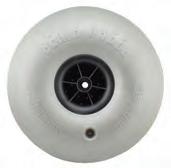
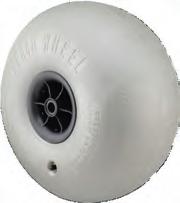
For more tips, go to coastalanglermag.com.













With excellent strength for line-to-line connections, the double uni is a go-to knot for connecting main lines to leaders. It is a quick and easy knot to tie, unlike some of the other line-to-line knots, so it’s a great option for on-thewater applications. Furthermore, it is very good for connecting di erent line types and diameters securely, which makes it the best knot for mono-to-mono or mono-to- uoro connections.

It’s also a good option to secure braid to uoro, and while it might not have the strength of the FG knot for this application, the double uni is much easier to tie and will save you some headache in real-world situations.
A disadvantage to the double uni knot is it’s a little bulky. Although it is an inline knot that keeps everything running in the right direction, the bump it creates at the connection and the two tag ends pointing in either direction can interfere with casting performance. e knot can cause some friction going through the guides. e double uni, however, is perfect for rigs where your leader will remain outside your rod tip. It’s also the right choice when casting distance and accuracy are not primary concerns. In most real-world scenarios, it will not inhibit casting ability enough that you’ll even notice.
For more tips, tricks and knots, visit usangler.com.

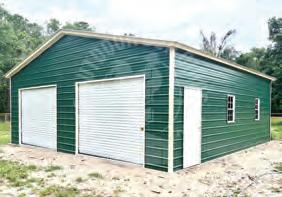











































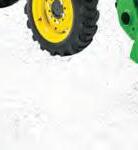


























































By completing conservation projects, the Chambers High School shing team recently earned a private, in-person custom rod building class with Mud Hole Custom Tackle. ey were the winning team in FWC’s School Fishing Club Conservation Project Competition and completed six projects including cleaning up and building mono lament recycling bins for their local waterbodies to win the grand prize.
All student anglers participating in the FWC’s 2022-23 School Fishing Club Program were required to complete at least one conservation project to qualify for funding associated with the program. Prizes were o ered by Mud Hole, Toad sh and Pure Fishing to encourage teams to complete multiple conservation initiatives. e competition awarded points per club participation in a variety of conservation-minded activities aimed at reducing the impacts of plastic pollution.

“Congratulations to these young anglers for their dedication to conservation,” said Tom Graef, FWC’s Freshwater Fisheries director. “ ey are making a di erence by leading the way for the next generation of anglers with these creative conservation projects.”
Punta Gorda Middle School won the second-place prize, and A. Crawford Mosley High School won the third-place prize.

“Supporting youth education is so important to our mission at Mud Hole Custom Tackle,” said Anthony Youmans, Mud Hole’s Education Program Director. “We’re honored to contribute the grand prize in this year’s competition and are always supportive of FWC’s e orts to lead conservation projects here in Florida, our home state.”
Mud Hole Custom Tackle, based in Oviedo, is the world’s largest supplier of rod building and tackle cra ing goods and instruction. From rod building












and repairing, to y tying and lure building, Mud Hole is the leading e-retailer and mail order supplier to hobbyists, small manufacturers and large OEMs, worldwide. O ering a superior shopping experience at mudhole.com, rapid ful llment, stellar customer service, and world class online content and instruction, Mud Hole Custom Tackle is the trusted source for the rod building and tackle cra ing community.
FWC’s School Fishing Club Program welcomed 38 new and 14 returning student angling clubs in Florida to the program last year, supported by the Division of Marine Fisheries Management, the Division of Freshwater Fisheries Management, and the Florida Youth Conservation Centers Network. e clubs committed to complete the provided FWC curriculum and at least one conservation project. Club mentors provided support and hands-on training in knot tying and shing gear assembly, as well as assistance with the clubs’ local events to increase student anglers’ con dence in the sport of shing. Information about the 2023-24 School Fishing Club Program will be announced later this summer.
For more information, visit MyFWC.com/SFC.
The 2023 CCA Florida STAR competition presented by Yamaha kicked o Saturday of Memorial Day weekend. Four STAR tagged red sh have already been recaptured, but what you won’t believe is that none of the anglers were CCA members and registered in the competition. ose four anglers missed out on their chance at some awesome boats and packages, and that means all the boats and packages are still available.
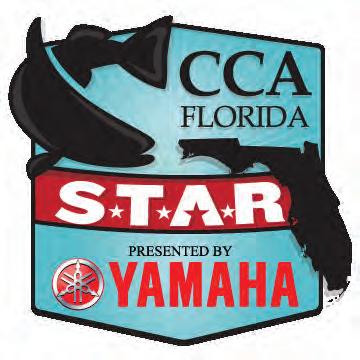
Registration for the summer-long competition is open until Sept. 4 and invites CCA members, non-members, anglers and non-anglers to take a shot at winning their share of prizes valued at more than $500,000 including boats, motors, electronics, tackle, scholarships and more. is event is about the shery winning, too. Participants become citizen biologists and citizen garbologists by submitting photos of their catch or garbage collected during the competition in the STAR app. In order to win, participants must take their entry photo on the 2023 CCA Florida STAR o cial measuring device, which can be picked up for free in any West Marine store or one of the many other STAR distribution locations throughout Florida. Find them listed on the STAR website.
“Every year we have lots of tagged red sh recaptured by unregistered anglers who are not members. We hope that this year, with more prizes, we will see more winners,” said CCA Florida STAR Director, Leiza Fitzgerald. “ e youth participation has been heartwarming, and to date STAR has awarded $800,000 in youth scholarships, plus in 2021 two youth anglers won a boat motor and trailer package that consisted of a 16-foot ski , 25hp Yamaha, Minn Kota Trolling motor and trailer. Every year there are over 100 winners In the STAR competition. Get registered and you could be one of them.”
e CCA Florida STAR competition presented by Yamaha has a division for everyone, from the non-angler to the experienced angler. It is comprised of 15 divisions targeting 12 inshore and o shore species, plus the Kick Plastic Trash Division presented by Papa’s Pilar which encourages cleanup of trash from Florida’s coastal waters. STAR’s signature Tagged Red sh Division o ers seven winners, ve adults and two youth, the choice of a Contender Boats 22 Sport, Path nder Boats 2200 TRS and a Carolina Ski 162 JLS. STAR has additional new Tagged Red sh sponsors with Dek Kat Boats o ering a 27 Flatz Kat and Sea Doo and Can-am o ering a fun package of a Trophy Fishing Sea Doo and the Can-am Defender. Each boat will be powered by a Yamaha, the competitions presenting sponsor. Be the rst winning tagged red sh angler for your choice of all these packages as your prize.
Once again in 2023, we have the ALTA SUPER STAR tagged red sh swimming in Florida waters. If it is recaptured, the winner will receive $50,000 cash! For the rst two youth anglers who win in this division, prizes include a tiller boat powered with Yamaha outboard, trailer, Minn Kota trolling motor and Humminbird electronics.
Each of Florida’s coastal counties have on average four tagged red sh for a total of over 160 prize-winning sh. e best opportunity to catch one of this year’s tagged red sh will be in Citrus and Charlotte Counties, STAR’s 2023 Destination Counties, which each have eight tagged red sh in their coastal waters.
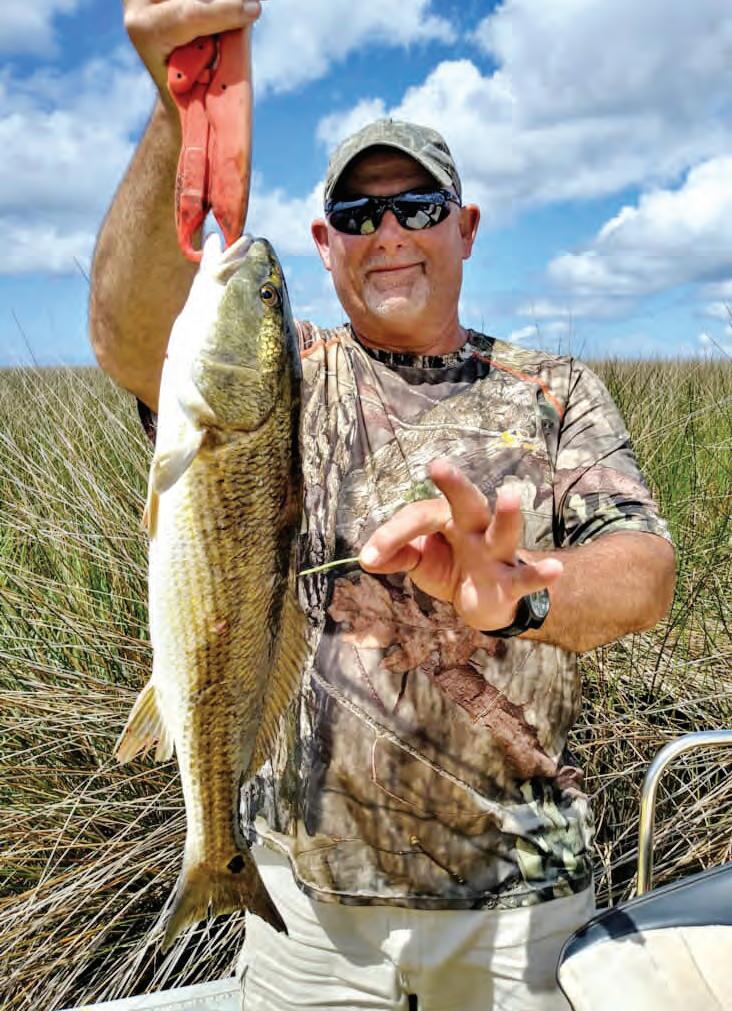
For the o shore anglers, the Tigress Outriggers and Gear Tagged Dolphin Division o ers one winner a $10,000 cash prize. e rst STAR registrant and CCA Florida member who catches a tagged dolphin will win. Twenty tagged dolphin (Mahi Mahi) were released for STAR in the lower Florida Keys.
STAR is a family-friendly competition, and CCA Florida youth members (ages 6 to 17) can participate for free. Kids are encouraged to submit entries in the Youth Scholarship Division presented by Realtree Fishing for an opportunity to win one of 12 scholarships totaling $100,000. Other divisions include the Power Pole Conservation Division, Bona de Kayak Division and Ladies Division as well as the Yamaha Guides which allows guides to participate when they are not on a charter for hire. Since most division winners are determined by a random drawing, it is not about catching the biggest sh, any size sh can win. Remember, it is very simple really, every sh you catch between now and Monday, Labor Day o ers the CCA member who is registered in STAR the opportunity to win their share of $500,000 in prizes and scholarships. You can’t win If you are not registered.
STAR is also a tool to gather catch data, it creates awareness for conservation, our sponsors and CCA Florida. Launched in 2015, the competition has set the bar for other shing tournaments to follow by implementing conservation-friendly alternatives such a catch-photorelease format and a trash division. Florida STAR focuses on conservation with its technology-based, CPR format and dedicated smartphone app which promotes the proper handling of species and allows participants who are members of CCA and registered in the competition to upload photos of their catch or trash buckets in the STAR competition and be rewarded for their e orts. CCA Florida also provides access to the data collected to other conservation organizations and universities to help educate the public and for use in their studies on conservation, habitat and stock assessments.
You can still register for STAR 2023. You have all summer and all the boats and packages are still available. To receive additional information on divisions, prizes and more, visit cca star.com or Facebook.
Put Orange Lake on your bass- shing itinerary for next spring. is 12,550-acre lake in Alachua County southeast of Gainesville is a springtime conveyor belt of big bass.
From February through April this year, 19 Orange Lake largemouths heavier than 10 pounds were reported to TrophyCatch, FWC’s big-bass recognition program.
Bass heavier than 13-pounds are given “Hall of Fame” status by TrophyCatch. Five 13-pluspounders have been caught statewide this year. Four of them came from Orange Lake, and three of those were caught in February.

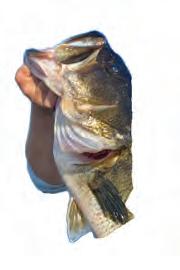
e most recent one we’ve heard of was a sh caught back on Feb. 7 that just popped up on the TrophyCatch Facebook
Kelly


a giant 13-pound, 3-ounce monster swimming a
Man… that sounds like a lot of fun.
For more information, visit www.trophycatch orida.com.
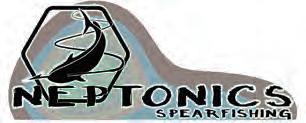


















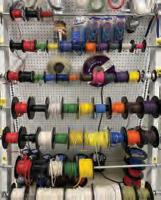


The surf can be bountiful and as easy as shing can be when the seas are calm. On a recent trip to the Gulf of Mexico’s calm shores, I was certain I was going to catch them at will. To the naked eye, conditions were as good as it gets, but many fellow anglers fell short of their dreams on this beautiful day. Here are some modi cations I made on the y that allowed me to come out ahead of most others.
is day provided us with glass-calm seas, clear water and bait everywhere, but one key ingredient was missing, substantial tide. What most of us focused on, including myself, were the calm conditions. is is always the draw for trout shing on the beachfront in Texas, and it is seldom the norm.



I did research the tide, and it was an early high

heading out, which, once again, seems perfect. However, the slope on the graph was a slow outgoing tide, not one that was going to trigger many bites on its own. Once I realized this and watched others leave empty handed, I decided to search for places that would encourage the slow outgoing current to increase in velocity. I sought out guts in the bars perpendicular to the shore. ese same guts have the potential to cause dangerous riptides, and they can also be the best place to sh. You typically see these guts by studying the waves, but with no waves I had to use my polarized glasses. ankfully, the water clarity made this an easy task. I drove along the beach looking for these, and once I spotted them, I stood on the back of my truck to increase my elevation to identify the best ones.
I’d found my pattern. Now the catching could begin! Keep in mind, as slow as the tide was moving, it did not create a dangerous situation


(always be cautious of rip tides on the beach), but it did speed up the current enough to trigger a good bite. I thoroughly worked all edges of these guts, nding most bites on the back side where the tide pulled bait from the shallow gut to the deeper second gut.

When the tide is slow, I like to try and get a reaction strike by throwing something a little di erent or working my lure erratically. On this day, I was throwing a rattling so -plastic paddletail. I also picked one with a bright green tail to stand out from the millions of bait sh traveling the rst and second guts. All of these tactics combined allowed me to salvage a day when most le with empty stringers.
e beachfront can be a great place to sh, and it’s fun for the kids. My boys enjoy wading beside me, and when the shing is over it’s time to play at the beach!






Alaska shing season started o with a bang for anglers visiting Ketchikan, Alaska. Halibut shing charters produced great catches of halibut, paci c cod, lingcod and rock sh. Salmon shing trips resulted in big king salmon while we awaited the arrival of silver salmon and pink salmon.

Early season typically is more inconsistent than the deep summer months of July, August and September. With that being said, our guests enjoyed better than average shing to start o the 2023 Alaska shing summer.








Fishing tours for cruise ship guests and y-in anglers spent the majority of May bottom shing. ese sheries consist of shing near and o shore waters for halibut, cod and rock sh. Deep-water jigging for halibut had guests reeling in keeper-sized halibut as well as oversized halibut ranging from 10 pounds to 120 pounds. ere’s nothing quite like the thrill of hooking into these deep sea dwellers, and the delicious white meat holds up well when frozen and shipped back home to the lower 48.
Halibut weren’t the only species caught during our halibut shing charters. Paci c cod were a staple while bottom shing for halibut. Cod were concentrated in large numbers on the sandy ats eating a variety of bottom rigs. Traditional halibut shing rigs with glow-in-the-dark squid and cut herring caught the majority of Paci c cod. We also found great success jigging for cod with metal jigs and so plastic swimbaits.
Following up halibut shing with rock sh and lingcod jigging made for a combination catch that had everyone smiling. We do this in shallower water with light tackle. While catching pelagic rock sh such as yellowtails and duskies, we also caught big lingcod. With such a phenomenal bottom shing area, you’re never quite sure what will grab the end of the line. Giant lingcod make a trophy catch for anyone visiting Alaskan waters.
King salmon shing opened June 1. Everyone rejoiced at the opportunity to pursue this iconic sh. Big king salmon catches came in throughout the entire southeast Alaska region. Ketchikan is known as the salmon capital of the world, and it didn’t disappoint. Herring Cove and Mountain Point were the rst areas to open up. is resulted in large numbers of anglers trolling for prized king salmon. As we look forward for the entirety of the region to open, these were the rst areas where big catches came in.
Over the next couple months, the shing will continue to heat up! Halibut will continue to show up in larger numbers as the water temperatures increase. In addition, the salmon shing will see a big burst of silver salmon and pink salmon to combine with the larger king salmon. It’s all happening now!
For more information, visit www.ketchikan shingtrips.com or call (907) 617-4717.
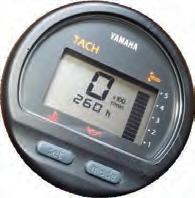
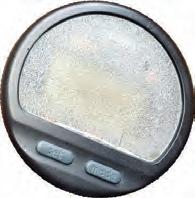
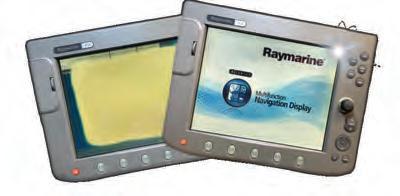



Most of the time the saying is true, bigger baits equal bigger sh! Although elephants eat peanuts, a big bait pro le is something big sh sometimes can’t resist whether you’re shing the open ocean or the Great Lakes. I’ve spent a lot of time in the last couple years experimenting with lures that are larger than what my previous comfort zone was for bass. It is pretty special to see what gets curious to come look at or bite these big baits.
ere are many di erent types of swimbaits on the market, but I’ll break them down into two styles to keep it simple. ere are hard, gliding-style swimbaits with treble hooks and there are so -body swimbaits. Each has a time and a place, and both attract some very big sh.
Depending on where you are in the country and the size of the forage in your lake, a normal meal for a bass is usually much bigger than you would think. Bass have huge mouths to accommodate large prey items. A two- or three-pounder has no problem at all swallowing a 6- to 8-inch bluegill whole. I’ve seen 10-plus-pounders eat gizzard shad up to 14 inches long! Trying to exactly duplicate the larger bait sh in your lake with a natural presentation is the key to drawing attention to your arti cial lure.
With hard swimbaits, my rst choice is a shad imitation. Most of the places I sh are full
of shad, and shad seem to be a favorite food source for bass.


Crappie are another forage species people sometimes forget about. Lately, when throwing big baits
over deeper water, I’ve caught some big sh with crappie down in their throats.
With so swimbaits, I usually go to a bluegill imitation. I like so baits because they are more weedless, and you can creep them through the grass or along the bottom in places where bluegills live.
Big swimbaits can get mighty expensive. If you are just getting started with them, I would suggest sticking with the more a ordable baits that get good reviews until you get your con dence up. en you can dive into some of the larger, more customized lures.
Learning to sh big baits is best done by getting on the water and doing it. Just get out there and experiment with retrieves until you nd out what works. Of course, throwing giant lures requires special equipment. I like 13 Fishing’s a ordable Defy for a rod. It’s an 8-foot swimbait rod that handles most big lures with ease. I pair this with a 300 sized reel, like the 13 Fishing Concept A3 and some 20- to 25-pound Seaguar Abrazx.
I hope this article sparks someone’s interest to get out there and throw a big bait. Once I stepped out of my comfort zone, I discovered it to be one of the coolest and most fun ways to target big bass all year long. Don’t hesitate to reach out to me on social media if you have questions about these tactics or any others.
Tyler Woolcott is a professional tournament angler and guide. Check out his website at www.tylerwoolcott shing.com.

really realized that I hooked a monster. Adrenaline started pumping hard and the fear of losing it almost sent me into a panic. I was alone, facing the biggest cat sh I ever seen in 23 years.
Italy’s River Po has done it again.
Last week, MADCAT pro sta er Alessandro Biancardi caught a 9-foot-long wels cat sh that will likely replace the IGFA world length record for the species. e monster wels measured 285 centimeters (9 feet, 4.2 inches) in length and stands to beat out the existing record by just 4 centimeters, or about an inch and a half.

Biancardi is a veteran cat sh angler who has targeted wels for more than two decades. He landed his potential new record a er a more than 40-minute battle while shing solo in an aluminum


jonboat.
e giant sh ate a so -plastic paddletail shed on a jighead.
“In silence, I approached the rst spot and a er few casts a powerful bite arrived. e sh stood still some seconds before starting a very complicated ght, between strong currents and a lot of submerged obstacles,” Biancardi wrote in a blog post. “I calmly managed to ght what I felt to be a prehistoric sh. I followed it for 40 endless minutes. When it surfaced for the rst time, I
“I tried gloving its mouth two or three times, but it was still too strong,” he wrote. “I decided to go in shallow water trying to land it from shore, and a er few tries, I managed to land it! I tied the sh to let him recover from the long ght then I suddenly realized that the boat was not anchored, and it was going away in the current. I was forced to have a swim to recover it with all my stu .”
Biancardi then called some friends from a nearby sh camp to come help him get a good measurement on the beast. A er taking measurements, the sh was released. Without a weight, it will not be considered for the all-tackle world record, which stands at 297 pounds, 9 ounces for a sh caught from the Po back in 2010.
For more, go to https://madcat- shing.com.


Coastal Angler and The Angler Magazine, Suzuki Marine and Sea Eagle have come together to offer readers a shot at this Sea Eagle FishSkiff 16 paired with a Suzuki DF4 outboard that’ll take you wherever the fish are. The FishSkiff 16 is an inflatable fishing boat that is lightweight, sturdy, stable and extremely packable. It rolls up small enough to fit in the trunk of a car and quickly inflates into a fishing machine. Powered by Suzuki’s four-stroke DF4A, you’ll have to hold on to your hat as you scream over the flats. Designed for efficiency and performance and portability, the DF4A provides all the speed and acceleration you can handle. It’s lightweight and can be attached or removed with ease.

Ifyou’re anything like my dad, you give your family everything. Your name, your time, your values — the people in your life know they can depend on you for practically anything. In exchange for imparting all of this energy and experience, you expect nothing in return.
e point? You deserve to treat yourself once in a while. You do so much for the people you care about. Now it’s time to focus on you for just a few minutes. at’s where the Men’s Due Volta Watch comes in. is astonishing innovation provides a digital readout that’s powered by a precise quartz engine, combining both analog and digital timekeeping.
Out tted with a stopwatch, alarm, a.m./p.m. settings, and day, date and month complications, this timepiece stands out from the crowd. With its large face and handsome, masculine design, this watch is perfect for the back nine and the happy hour afterwards. Water-resistant up to 3 ATM, this timepiece won’t wimp out if you have a run-in with a water hazard.
Other hybrid watches can sell for thousands of dollars, but because we’ve built more than 1 million watches, we know how to create real value. at’s why we can o er this timepiece for just $59! If you’re not completely satis ed with this watch, return it for a full refund.

Act quickly! is one-of-a-kind watch has been one of our fastest sellers this year. Of our original run of 2,872, we only have 389 left for this ad! In the last couple of years there’s been a watch shortage, but Stauer has got you covered. If you’re the kind of man who gives everything and expects nothing in return, it’s time to treat yourself.

Watch Speci cations:










•Complications: stopwatch, alarm, a.m./p.m. settings, and day, date and month



•Precision movement chronograph

•Stainless steel caseback and crown

•Water-resistant to 3 ATM
Men’s Due Volta Watch $399 $59* + S&P Save $320








 By Gary Turner
By Gary Turner
The sun was just cresting the mountains and the moon was low in the west as Capt. Ron Ratlief, of Ron’s Fishing Guide Service, and I began shing for redear sun sh on Arizona’s Lake Havasu. is trip has been on my bucket list for years. I just never made the time, which is ridiculous considering Havasu is pretty much the Holy Land for bream shing.
Havasu is a large Colorado River reservoir on the Arizona/Colorado border. In recent years, the lake has produced a series of world-record redear sun sh, with the current mark standing at 6-pounds, 4-ounces. Havasu’s freakishly large redears are due to a plentiful food source of invasive mussels that have in ltrated the system. e lake also holds some enormous bluegills, which I came to nd out over two days shing with Ron and a third day with my buddy Zac Mickle.
You could feel it was going to be a hot one—over 100 degrees— as the cool morning air evaporated with the sun. A er all, Havasu is an oasis in the middle of a desert. We started the morning sight shing coves. Havasu’s water is as clear as the Keys, and I half expected to see bone sh swimming by. We searched several coves and saw lots of sh, including bluegills, carp, cat sh, giant gizzard shad, tilapia, green sun sh and small stripers, just
to name a few. We also found some redear sun our target species, but they were small, a pound or less, and we were looking for big ones!
We moved to plan B and headed to deeper water. Havasu has the most man-made attractors and brushpiles I’ve ever seen. might be a bunch in South Carolina’s Santee, but you would never see them. e crystal-clear water makes everything visible, and as the sun got higher, we could see even more. We saw structure clearly in 18 feet of water with large redears on it. I dropped a night crawler on a jig head down, and BAM! I had a good bite! We landed a nice redear heavier than two pounds and continued hitting deeper brush, where we saw some big ones and caught a thick 14-incher that was pushing 3 pounds. A er several other sh in the 1 to 1 ½-pound range, Ron suggested we move back to a cove for a few last casts before heading in.
In the cove, I got hammered by a good one, which upon landing was about the same size as the 2-pounder from earlier, but it looked more like a bluegill. I was thinking it might be a hybrid between the two species, which was later con rmed.

If you like bream, you need to check out Havasu. It is a beautiful lake in the desert with some giant redears and bluegills. I might not have


caught a world record this year, but I’ve already booked next year’s trip.

Check out Gary Turner’s shing adventures on his YouTube channel at youtube.com/ @FishingWithGary.
















Travel the globe, without leaving home—with this set of the world’s ve most popular pure silver coins. Newly struck for 2023 in one ounce of ne silver, each coin will arrive in Brilliant Uncirculated (BU) condition. Your excursion includes stops in the United States, Canada, South Africa, China and Great Britain.
Each of these coins is recognized for its breathtaking beauty, and for its stability even in unstable times, since each coin is backed by its government for weight, purity and legal-tender value.

2023 American Silver Eagle: The Silver Eagle is the most popular coin in the world, with its iconic Adolph Weinman Walking Liberty obverse backed by Emily Damstra’s Eagle Landing reverse. Struck in 99.9% fine silver at the U.S. Mint.



2023 Canada Maple Leaf: A highly sought-after bullion coin since 1988, this 2023 issue includes the FIRST and likely only use of a transitional portrait, of the late Queen Elizabeth II. These are also expected to be the LAST Maple Leafs to bear Her Majesty’s effigy. Struck in high-purity



99.99% fine silver at the Royal Canadian Mint.
2023 South African Krugerrand: The Krugerrand continues to be the best-known, most respected numismatic coin brand in the world. 2023 is the Silver Krugerrand’s 6th year of issue. Struck in 99.9% fine silver at the South African Mint.



2023 China Silver Panda: 2023 is the 40th anniversary of the first silver Panda coin, issued in 1983. China Pandas are noted for their heart-warming one-year-only designs. Struck in 99.9% fine silver at the China Mint.


2023 British Silver Britannia: One of the Royal Mint’s flagship coins, this 2023 issue is the FIRST in the Silver Britannia series to carry the portrait of King Charles III, following the passing of Queen Elizabeth II. Struck in 99.9% fine silver.





These coins, with stunningly gorgeous finishes and detailed designs that speak to their country of origin, are sure to hold a treasured place in your collection. Plus, they provide you with a unique way to stock up on precious silver. Here’s a legacy you and your family will cherish. Act now!
You’ll save both time and money on this world coin set with FREE shipping and a BONUS presentation case, plus a new and informative Silver Passport!
2023 World Silver 5-Coin Set Regular Price $229 – $199 SAVE $30.00 (over 13%) + FREE SHIPPING






FREE SHIPPING: Standard domestic shipping. Not valid on previous purchases. For fastest service call today toll-free


1-888-201-7070



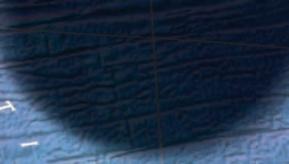




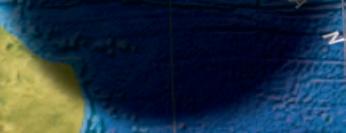
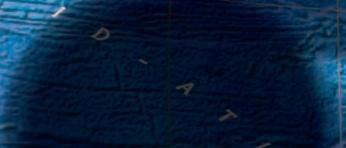












Offer Code WRD333-05









Please mention this code when you call.






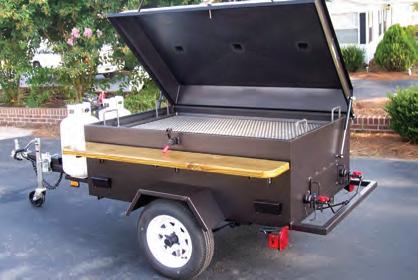
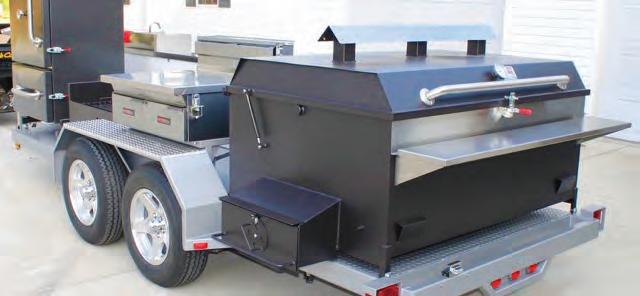 By Capt. Judy Helmey
By Capt. Judy Helmey
Check out the crazy markings on this Pennsylvania bass!
Recently the American Fisheries Society Black Bass Conservation Committee (BBCC) posted photos of this striking, black-splotched largemouth bass on its Facebook page.

During the old days of chumming, lots of shermen used glitter in their chum, but we sure didn’t talk about it. Why? It was a serious sh-catching secret, and it works as well now as it ever did.
Of course, back then we hadn’t heard of microplastics. We didn’t equate those tiny ashy akes with pollution. Traditional glitter is made with aluminum and plastic, which is a really bad thing to be throwing in the water. ankfully, today there is biodegradable glitter made of plant cellulose. is more environmentally friendly product enables us to keep using our old tricks without doing harm to the ocean.
When you add biodegradable glitter to your chum, the oils coat
every single small piece of glitter. When it hits the water, each piece of glitter becomes sh attractant. As it slowly spreads through the water column, it catches sunlight and re ects it. e oil onboard each small piece of glitter leaves a trail that only a hungry smart sh would care to follow.
You might ask how do I know that glittering chum works? Well, when you start getting hits and landing sh, open the sh box and take a look. You know how glitter is. It gets everywhere and sticks to everything. Well, your sh box and the sh in it will be coated in glitter. Trust me.

Capt. Judy Helmey runs Miss Judy Charters o the Georgia coast. Check them out at missjudycharters.com.

e photos, by professional bass sherman Grae Buck, show his wife Jessica Buck holding a sh with melanosis. e post goes on to explain that this condition is when something a ects the pigment expression in the skin, turning it black. Termed blotchy bass syndrome, it has been found in black bass species in waterbodies across the United States with increasing frequency.
“While a truly melanistic sh would be all black, we more commonly see parts of the sh black, irregular blotches, spots, or ns,” the post reads. ese crazy colored sh show up from time to time, and previously it has been explained as a genetic mutation. In its explanation of this sh, however, BBCC pointed to research being conducted at the U.S.G.S. Eastern Ecological Science Center in West Virginia.
e research found that this blotchy skin condition is actually caused by a viral infection, an emerging novel adomavirus. Researchers have not pinned down a cause yet, but a U.S.G.S. report suggests higher incidences of blotchy bass syndrome in disturbed-water systems, with a potential link to chemicals. ere is currently broad ongoing research to try and determine the causes and e ects of this infection.


Follow the BBCC at www.facebook.com/AFS.Black.Bass.

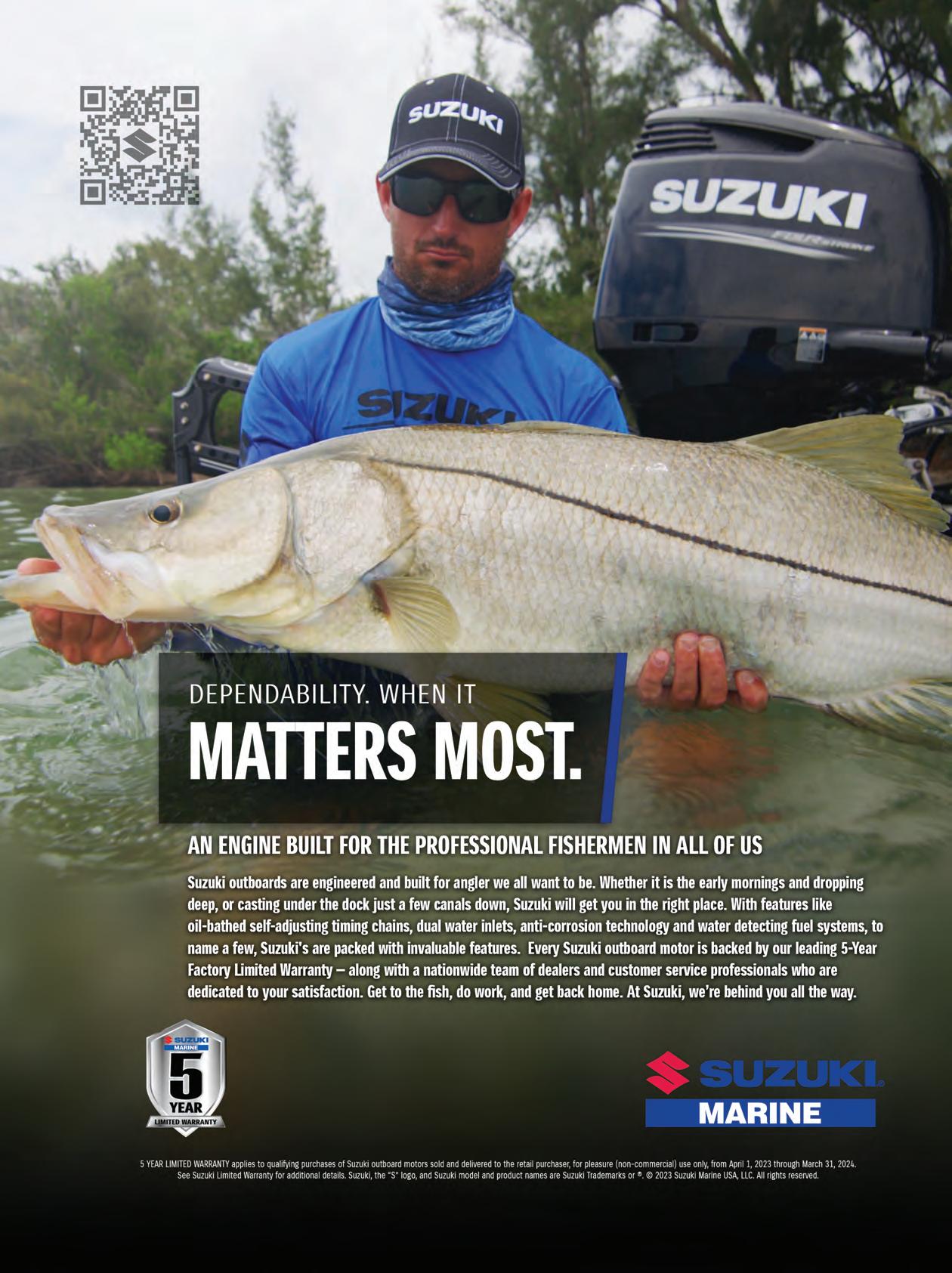
Home of world class fishing on the beautiful Watauga Lake, rugged Doe River and designated trophy trout stream, Watauga River
